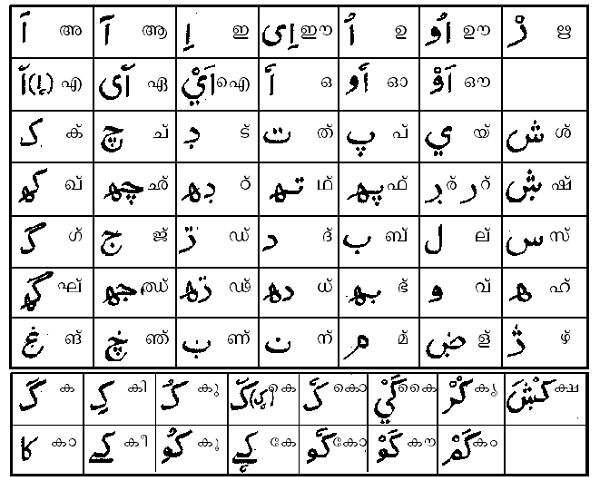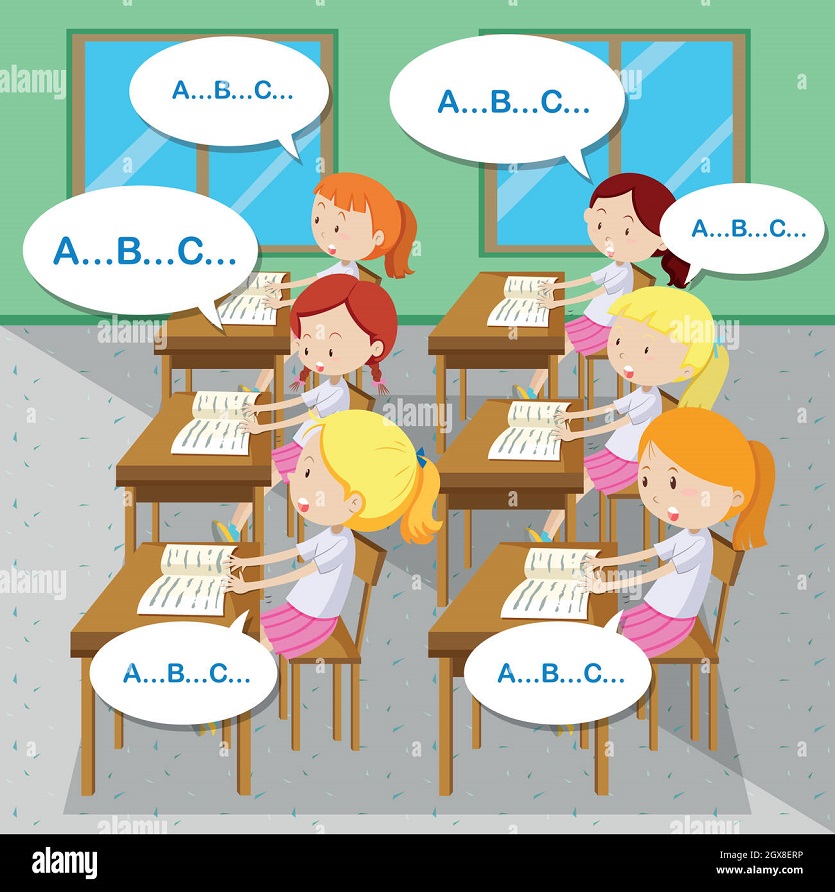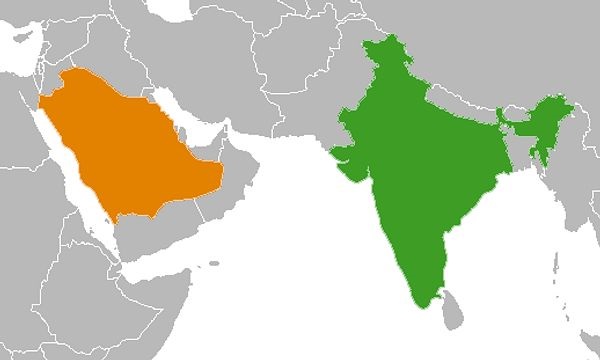
The study of proper principle(s) of translation is termed as the translation theory. This theory, based on a solid foundation on understanding of how languages work, translation theory recognizes that different languages encode meaning in differing forms, yet guides translators to find appropriate ways of preserving meaning, while using the most appropriate forms of each language. The process of translation started when the first human couple interacted with each other, however, it was organized when the first translator, a French Humanist Etienne Dolet, formed rules for rendering. Hence, those paradigms provide the base for modern complicated investigation. Thus, this paper will be an effort to evaluate the theory and its practice even though the fundamental principles remained almost the same throughout the process of development. The evaluation will be attempted to understand, analyze and conceptualize the theories and practices of translation in European tradition in a linguistic perspective. The paper deals with how theories of translation and linguistics theories are bounded and how do them influenced each other. Special consideration will be given to the theories of Nida and Catford those are based on linguistics theories and principles. The need for a comprehensive theoretical framework for translation practices will be emphasized. It is an attempt not only to internalize western theories of translation but to make the translation practices more easy and accurate.
Key Words: Theory of Translation, Word for Word, Sense for Sense, Linguistics and Translation, Equivalency and Translation Shifts A theory, according to Longman Dictionary of Applied Linguistics, can be “a statement of a general principle, based upon reasoned argument and supported by evidence that is intended to explain a particular fact, event or phenomenon”. New mark says in his Approaches to translation that some critic thinks that theory of translation is “neither a theory nor a science, but the body of knowledge that we have and still have to have about the process of translation”
However, the theory of translation should be able to describe and explain the process as well as the output. It should emphasize on the process and procedure involved in any kinds of inter lingual communication rather than on discourse. The translation was not considered as a creative work, art or science but a mere copy. So the early translators often differed considerably in the meaning they gave to the term such as “faithfulness”, “accuracy” or even the word “translation” itself. Hence, the progression of translation theory was slow to form and crystallize over the ages. In modern time theories are formulated with different perspectives like stylistics, author’s intent, reader’s intent, linguistic equivalency, problems of interpersonal communication, kinds of content, narrative techniques, context and situational context. As it is impossible to trace back the complete history of translation, it is an attempt to internalize and evaluate the practice of translation through the ages with special attention to the development of theoretical formation in translation studies.
The history of Translation goes back to the history of human existence. The practice of translation was discussed by Marcus Tullius Cicero (106-43 BC) and Horace (65- 8 BC). Steiner (1992: 248) identifies Cicero’s Libellus de optimo genere oratorum of 46 BC and Horace’s Ars Poetica of 20BC as the starting point of theorizing about translation, and most other European theorists follow suit. (Bassnett– McGuire 1991)
The traces of translational activities are dating from long before Cicero and it is important to note that it has likely to be accomplished when the first utterance was practiced. Hung and Pollard (1998: 366) note that there were government officials with special responsibility for translation during the time of Zhou Dynasty in China in the ninth century BC, and Krishnamurthy (1998: 464-73) traces the origins of the tradition on the Indian subcontinent back to the fourth century BC. Even the Roman tradition itself predates Cicero (Kelly: 1998:495). But we have no records of the outcomes of their thinking; hence the habit of starting with Cicero and Horace. (Kirsten Malmkjer 2005)
Literal, Free and Faithful Translation
Translation theory seemed to locked, until the second half of the twentieth century, in what George Steiner (1992:319) calls a ‘sterile’ debate over literal, free and faithful translation. Cicero outlined his approach to translation in Libellus De Optimo Genere Oratorum, introducing his own translation of the speeches of the Attic orators Aeschines and Demosthenes:
“And I did not translate them as an interpreter, but as an orator, keeping the same ideas and forms, or as one might say, the ‘figures’ of thought, but in language which conforms to our usage. And in so doing, I did not hold it necessary to render word for word, but I preserved the general style and force of language”. (Cicero 46 BC/1960: 364)
The word for word translation is down casted by Cicero and Horace. The word ‘interpreter’ in first line seems to denote the mode of word for word translation, but the core of his approach is sense for sense translation. Jeremy Munday (2001:20) remarks that the approach of Cicero and Horace, which underlines the goal of producing an aesthetically pleasing and creative text in Target Language, had great influence on the succeeding centuries.
Developmental history of western translation theory is widely influenced by and bound up with history and practice of Bible translation. The Bible translator, Eusebius Hieronymus Sophronius, known in English as St Jerome, is perhaps the most famous western translator of all time. In 382 he was commissioned by Pope Damasus to revise the Latin translation of the New Testament and Jerome settled in Bethlehem where he translated the Old Testament into Latin directly from Hebrew and the New Testament and Psalms into Latin from Greek. The approach followed by Jerome, except translating Holy Scriptures, was centered on sense for sense translation. However in the case of Holy Scriptures he advocates word for word translation. He describes his strategy in following terms:
“Now I not only admit but freely announce that in translating from the Greek- except of course in the case of Holy Scriptures, where even the syntax contains a mystery- I render not word for word, but sense for sense”(St Jeromen395 CE/1997:25)
The ‘literal’ and ‘free’ poles surface once again in the first complete translation of Bible into English from Latin between 1380 and 1384 by John Wycliffe. Wycliffe believed that everyone should have access to the word of God in a language that they could understand. (Kirsten Malmkjaer: 2005:4). A second revised edition was published in 1408 by John Purvey. Whereas the first edition was strictly literal, Purvey’s edition is a sense for sense translation. The preface says: “the best translating out of Latin into English is to translate after sentence and not only after words” (Robinson 1997:54).
Reader oriented translation approach was established by the first translation of Bible, published in 1534, in German rendered by Martin Luther (1483-1546). He explains his views on Bible translation in Sendbrief vom Dolmetschen (Circular Letter about Translation): ‘the Lord’s message must be interpreted by the translator and conveyed in language that will appeal to its recipients. This means scarifying the original’s grammar for that of target language and Luther also advocates the judicious employment of vernacular imagery when appropriate (Bassnett– McGuire 1991:49). According to Robinson (1997:84), Luther’s most important contribution to translation theory lies in his ‘reader-orientation’. Luther follows St Jerome in rejecting a word for word translation strategy since it would be unable to convey the same meaning as the ST (Source Text) and would sometimes be incomprehensible. His infusion of the Bible with the language of ordinary people and his consideration in terms focusing on TL (Target Language) and the TT (Target Text) reader were crucial (Jeremy Munday 2001:23). Typical of this is his famous quote praising the language of people:
“You must ask mother at home, the children in the street, the ordinary man in the market and look at their mouths, how they speak, and translate the way; then they will understand and see that you are speaking to them in German”(Storig 1963).
The next great English Bible translation of William Tyndale and The King James Authorized Version of Bible were more linguistically oriented and theologically diffuse. The translators allowed all of older versions to influence their works. According to Steiner, this strategy of deliberate archaism enabled the ‘vitality’ and ‘logic of a cumulative tradition’ to transmute the Hebrew, Greek and Latin sources into English sensibility, where it continues to play a part more immediate than that of Scripture in any other European community, more linguistically central and theologically diffuse( Steiner 1992:367)
Formative stage of systematic translation theory
The next phase of development of translation studies are bound with the formative stage of translation theories. At the early period of this stage rules and principles in regarding of translation practice is prescribed by theorists. They include Etienne Dolet, Chapman and Batteux. In the prescriptive fashion Dolet set out five principles in order of importance as follows:
1. The translator must perfectly understand the sense and material of the original author, although he should feel free to clarify obscurities.
2 .The translators should have a perfect knowledge of both SL and TL, so as not to lessen the majesty of the language.
3 .The translators should avoid word for word renderings.
4. The translator should avoid Latinate and unusual forms.
5 .The translators should assemble and liaise words eloquently to avoid clumsiness.
In Dolet’s principles concern is about to reproduce the sense and to avoid word for word translation. The set of rules devised by Dolet are the principal road map for future translators because more or less the same paradigms were set by the rest of the translators with a slight emphasis on one of the above mentioned rules.
George Chapman (1559-1634), an English poet, dramatist, and a great translator of Homer, had also emphasized on catching on the spirit of the original text rather than word for word translation. He reiterated Dolet’s views. According to these principles, translator is seeking to bring about a “transmigration” of the original text, which he approaches on both the technical and metaphysical level, as a skill equal with duties and responsibilities both to the author and to the audience.
The period of Renaissance with reference to translation studies can not be completed without mentioning the three most important names in the history of translation which are:
John Denham (1615-69) sees translator and original writer as equals, but operating in different social and temporal context. The translator’s duty to his SL text is to exact what he perceives as the essential core of the work and to reproduce or recreate the work in TL. On the other hand, Abraham Cowley (1618-67) asserts that his translation aims not so much at letting the reader know precisely what the original author said as what was his way and manner of speaking. Hence, it can be concluded that Cowley believes in free translation.
John Dryden (1631-1700), has set three groups of translation in the preface of “Ovid’s Epistles” (1680):
1) Metaphrase, or turning an author word by word and line by line from one language into another, which corresponds to literal translation;
2) Paraphrase, or translation with latitude, where the author is kept in view by the translator, so as never to be lost, but his words are not so strictly followed as his sense; this involves changing whole phrases and more or less corresponds to faithful or sense for sense translation; the Ciceronian ‘sense for sense’ view of translation;
3) Imitation, ‘forsaking’ both words and sense, where the translator can abandon the text of the original as he sees fit. This corresponds to Cowley’s very free translation and is more or less adaptation.
The precepts set by Dryden are also a reiteration of Dolet’s principles. In these precepts, like Dolet, Dryden also accentuates on the sense for sense rendering. Subsequent poets like Alexander Pope (1688-1744) too adopted the same line of approach as that of Dryden.
Dr. Johnson (1709-84), comments that if elegance is gained, surely it is desirable, provided nothing is taken away. The right of the individual to be addressed in his own terms, on his own grounds, is an important element in the eighteenth century translation and is linked to the changing concept of originality. Similarly, Goethe (1749-1832), argues that every literature must pass through three phases of translation:
1) Acquaint us with foreign countries on our own terms;
2) Translator absorbs the sense of a foreign work but produces it in his own terms;
3) Aims at perfect identity between the SL text and the TL text, achieving of this must be through the creation of a new “manner” which fuses the uniqueness of the original with a new form and structure.
Alexander Fraser Tytler’s ‘Essay on Principles of Translation’ (1797) appears to be the first systematic attempt, after Dryden, at the theory of translation. Rather than Dryden’s author oriented description, he defines a ‘good translation’ in TL reader oriented terms to be
That in which the merit of the original work is so completely transfused into another language as to be as distinctly apprehended, and as strongly felt, by a native of the country to which that language belongs as it is by those who speak the language of the original work. (Tytler 1797)
Tytler has laid down three rules for translation:
1) The translator should give a complete transcript of the ideas of the original work.
2) The style and manner of the work should be of the same character with that of the original.
3) The translation should have all the ease of the original composition.
Tytler’s first law ties in with Dolet’s first two principles in that it refers to the translator having a perfect knowledge of the original being competent in the subject and giving a faithful transfusion of the sense and meaning of the author. Tytler’s second law, like Dolet’s fifth principle, deals with the style of the author and involves the translator both identifying the true character of this style and having the ability and correct taste to create in the TL. The third law talks of having all the ease of composition of the ST. (Munday 2002)
Polemic between Francis Newman and Mathew Arnold, which focused on the status of ST and the form of TL, constitutes the place of translation in ninetieth and early twentieth century. Newman emphasized the foreignness of the work by a deliberately archaic translation and yet saw himself as reaching out to a wide audience. This was violently opposed by Mathew Arnold in his lecture on Translating Homer (1861) which advocated a transparent translation method. Importantly, Arnold, whose argument won the day, advises his audience to put their faith in scholars, who, he suggests, are the only ones who are qualified to compare the effect of TT to the ST. (Munday 2002)
Translation Equivalency
At this phase development of translation theory was merged with notions and concepts of linguistics and theoreticians in the 1950s and 1960s began to attempt more systematic analysis of translation. The new discussion focused on certain linguistic issues. The most important of the issues were those of meaning and equivalence.
Russian born American structuralist Roman Jackobson describes three kinds of translations in his seminal paper ‘On Linguistic Aspects of Translation’ (Jackobson 1959/2000). They are as follows;
1) Intralingual transltion or rewording: an interpretation of verbal signs by means of other signs of same language
2) Interlingual translation or translation proper: an interpretation of verbal signs by means of some other language
3) Intersemiotic translation or transmutation: an interpretation of verbal signs by means of signs of non-verbal sign systems.
Here, Jakobson goes on to examine key issues of translation notably, linguistic meaning and equivalency. Jakobson follows the relation set out by Saussure the signifier (the spoken or written signal) and signified (the concept signified). Jakobson then moves on to consider the problem of equivalence in meaning between words in different languages. He points out that there is ordinarily no full equivalence between code units (1959). From a linguistic and semiotic angle, Jakobson approaches the problem of equivalence with the following definition “Equivalence in difference is the cardinal problem of language and the pivotal concern of linguistics”.
Eugene Nida’s Theory of Translation (Science of Translation) developed from his own practical work from the 1940’s onwards when he was translating and organizing the translation of the Bible. Nida attempts to move translation (Bible translation in his case) into a more scientific era by incorporating recent work in linguistics. Nida’s more systematic approach borrows theoretical concepts and terminology both from semantics and pragmatics and from Noam Chomsky’s work on syntactic structure which formed the theory of generative – transformational grammar (Chomsky 1957, 1965).
The old terms such as literal, free and faithful translation are discarded by Nida in favour of ‘two basic orientations’ or ‘types of equivalence’: formal equivalence and dynamic equivalence. These are defined by Nida as follows:
Formal equivalence:
Formal equivalence focuses attention on the message itself, in both form and content… One is concerned that the message in the receptor language should match as closely as possible the different elements in the source language. (Nida 1964a)
Formal equivalence is thus keenly oriented towards the ST structure, which exerts strong influence in determining accuracy and correctness. Most typical of this kind of translation are ‘gloss translations’, with a close approximation to ST structure, often with scholarly footnotes, allowing the student to gain close access to the language customs of the source culture.(Munday 2002).
Dynamic Equivalence:
Dynamic equivalent is based on what Nida calls ‘the principles of equivalent effect’ where the relationship between the receptor and message should be substantially the same as that which existed between the original receptors and message (Nida 1964).
The message has to be tailored to the receptors linguistic needs and cultural expectation and aims at complete ‘naturalness of expression’. Naturalness is a key requirement for Nida. Indeed, he defines the goal of dynamic equivalence as seeking the closest natural equivalent to the source language message. The receptor oriented approach considers adaptation of grammar, of lexicon and of cultural references t be essential in order to achieve naturalness; the TT language should not show interference from the SL, and the foreignness of the ST setting is minimized (Nida 1964). For Nida, the success of the translation depends above all on achieving equivalent response. It is one of the four basic requirements of a translation, they are:
1) Making sense
2) Conveying the spirit and manner of the original
3) Having a natural and easy form of expression
4) Producing a similar response.
Although dynamic equivalence is aimed at, it is also a graded concept since Nida accept that the conflict between the traditional notions of content and form can not be easily resolved. As a general rule for such conflicts, Nida underlines that correspondence in meaning must have priority over correspondence in style, if equivalent effect is to be achieved. Jeremy Munady(2002)
Newmark’s approaches to translation have been widely used on translator training courses and combine a wealth of practical examples of linguistic theories of meaning with practical application of translation. Yet Newmark departs from Nida’s receptor oriented line, feeling that the success of equivalent effect is illusory and that the conflict of loyalties, the gap between emphasis on source and target language will always remain as the overriding problem in translation theory and practice. Newmark suggests narrowing the gap by replacing the old terms with those of semantic and communicative translation:
Communicative translation attempts to produce on its readers an effect as close as possible to that obtained on the readers of the original. Semantic translation attempts to render, as closely as the semantic and syntactic structures of the second language allow, the exact contextual meaning of the original. (Newmark 1981).
This description of communicative translation resembles Nida’s dynamic equivalence in the effect it is trying to create on the TT reader, while semantic translation has similarities to Nida’s formal equivalence. However new mark distances himself from full principle of equivalent effect.
Translation shift approach
Catford follows the Hallidian linguistic model, which analyses language as communication, operating functionally in context and on a range of different levels ( eg: phonology, graphology, grammar, lexis) and ranks (sentence, clause, group, word, morpheme etc.)
As far as translation is concerned, Catford makes an important distinction between formal correspondence and textual equivalence.
A formal correspondent is any TL category (unit, class, element of structure etc.) which can be said to occupy, as nearly as possible, the same place in the economy of the TL as the given SL category occupies in the SL ( Catford 1965)
A textual equivalent is any TL text or portion of text which is observed on a particular occasion… to be the equivalent of a given SL text or portion of text.
Textual equivalence is thus tied to a particular ST-TT pair, while formal equivalence is a more general system-based concept between a pair of languages. When the concepts diverge, a translation shift deemed to have occurred. In Catford’s own words, translation shifts are thus departures from formal correspondence in the process of going from the SL to the TL. Catford considers two kinds of shifts:
Sift of Level
Shift of Category
A level shift would be something which is expressed by grammar in one language and lexis in another. Most of Catford’s analysis is given over to category shifts. These are divided into four kinds:
Structural shifts: these are said by Catford to be the most common form of shift and to involve mostly a shift in grammatical structure.
From direct to indirect
Class shifts: these comprise shifts from one parts of speech to another.
Unit shifts or rank shifts: these are shifts where the translation equivalent in the TL is at a different rank to the SL. Rank here refers to the hierarchical linguistic units of sentence, clause, group, word and morpheme.
Intra system shifts: these are shifts that take place when the SL and TL possess approximately corresponding systems but where the translation involves selection of a non corresponding term in the TL system. Catford proposed very broad types of translation in terms of three criteria:
1) The extent of translation (full translation vs. partial translation);
2) The grammatical rank at which the translation equivalence is established (rank-bound translation vs. unbounded translation);
3) The levels of language involved in translation (total translation vs. restricted translation).
An extremely interesting discussion of the notion of equivalence can be found in Mona Baker’s approach which seems to offer a more detailed list of conditions upon which the concept of equivalence can be defined. She explores the notion of equivalence at different levels, in relation to the translation process, including all different aspects of translation and hence putting together the linguistic and the communicative approach. She distinguishes between:
1) Equivalence that can appear at word level and above word level,
2) Grammatical equivalence, when referring to the diversity of grammatical categories across languages;
3) Textual equivalence, when referring to the equivalence between a SL text and a TL text in terms of information and cohesion;
4) Pragmatic equivalence, when referring to implicatures and strategies of avoidance during the translation process.
The notion of equivalence is undoubtedly one of the most problematic and controversial areas in the field of translation theory. As it is a contemporary issue, so more research needs to be done in this field. The modern era is full of complexities and so are the theories. Hence, simplifying the rules of translation for the forthcoming years will definitely be a challenging task for the translator as new terminologies and disciplines are emerging so rapidly that one has to be prompt enough to meet the requirements of the global village.
Functional theories of Translation
Katharine Reiss’s work in the 1970s builds on the concept of equivalence but views the text, rather than the word or sentence, as the level at which communication is achieved and at which equivalence must be sought. (Reiss1977). Her functional approach is based on the various functions of the language. The main characteristics of each text type are summarized by Reiss as follows:
1) ‘Plain Communication of facts’. Text type is informative. The language dimension used to transmit the information is logical or referential and the content or topic is main concern of the communication.
2) Creative Composition: the author uses the aesthetic dimension of language. The author or sender is foregrounded as well as the form of the message and text type is expressive.
3) Inducing behavioral responses: the aim of the appellative function is to appeal to or persuade the reader the reader or receiver of the text to act in a certain way. Text type is operative.
As per her functional approach each text can be translated using various perspectives with respect to its communicative function. Reiss also lists out a series of intralinguistic and extralinguistic instruction criteria by which the adequacy of a TT may be assessed. There are new approaches like Discourse and register approach, skopos theory and cultural oriented approaches. But they are more or less at their early stage and urging to have more comprehensiveness and theoretical frameworks.
Translation theories are not much comprehensive and concentrated on only one or two perspective of discourse. That shows their inability to challenge the problems of translators while practicing. So a need towards a comprehensive theory with a wider perspective is in high. The complementary relation of translation with other areas and fields of knowledge like contrastive linguistics, pragmatics, communication, cultural studies, literary theory, stylistics, discourse analysis, linguistic philosophy and general linguistics should be taken into account. It is to be noted that certain translation corpus should be developed with a theoretical perspective to find solutions to the problems of equivalency.
References:
Arnold,M. On Translating Homer. London: AMS Press, 1861/1978. Print.
Bassnett- McGuire, Susan. Translation Studies: Revised Edition. London and New York: Methuen/Routledge, 1991. Print.
Benjamin, A. Translation and Nature of Philosophy: A New Theory of Words. London and New York: Routledge, 1989. Print.
Catford, J.C. A Linguistic Theory of Translation. London: Oxford University Press, 1965/2000. Print.
Chomsky, N. Syntactic Structures. Gravenhage: Mouton, 1957. Print.
Cicero, M.T. ‘De Optimo Genere Otatorum’, translated by H.M. Hubbell, Cambridge: Harvard University Press, 1960. Print.
Dolet, E. La maniere de bein traduire d’une langue en aultre, Paris: J. De Marnef, 1540/1997. translated by D.G. Ross as ‘How Translate Well from One Language to another’ in D. Robinson (ed.) 17-31 Print.
Hung, Eva and David Pollard. ‘Chinese Tradition’, in Mona Baker (ed.), Routledge Encyclopedia of Translation Studies, London and New York: Routledge, 1998. 365-74. Print.
Jakobson, R. ‘On Linguistic Aspects of Translation’, in L.Venuti(ed.) 1959/2000 113-18 Print.
Jerome, E.H. ( St Jerome) ‘De optime genere interpretandi, translated by P.Carroll as ‘ On the Best Kind of Translator’, in D. Robinson (ed.) 1997 22-30 Print.
Kelly, Louis. ‘Latin Tradition’, in Mona Baker (ed.), Routledge Encyclopedia of Translation Studies, London and New York: Routledge, 1998. 495-503. Print.
Krishnamurthy, Ramesh. ‘Indian Tradition’, in Mona Baker (ed.), Routledge Encyclopedia of Translation Studies, London and New York: Routledge, 1998. 464-73. Print.
Malmkje, Kirsten. Linguistics and the Language of Translation. Edinburgh: Edinburgh University Press, 2005. Print.
Munday, Jeremy. Introducing Translation Studies: Theories and Application. London and New York: Routledge, 2002. Print.
Newmark, P. Approaches to Translation. Oxford and New York: Pergamon, 1981. Print.
_____ . A Textbook of Translation, New York and London: Pantice-Hall, 1988. Print.
Nida, E.A. and C.R. Taber. The Theory and Practice of Translation Leiden: E.J. Brill, 1964. Print.
Nida, E.A. Towards a Science of Translating. Leiden: E.J. Brill, 1964. Print.
Reiss, K. ‘Text Types, translation types and translation assessment’ , translated by A. Chesterman, in A. Chestreman (ed.) 1977/1989 105-15 Print.
Robinson, D. Translation and Empire: Postcolonial Theories Explained. Manchester: St Jerome, 1997. Print.
Steiner, George. After Babel: Aspects of Language and Translation. Oxford and New York: Oxford University Press, 1998. Print.
Storig, H.J. (ed.) Das Problem des Ubersetzens. Darmstadt: Wissenschaftliche, 1963. Print.
Tytler, A.F. Essay on Principles of Translation, Edinburgh: Cadell & Davies, extracted in D. Robinson (ed.) 1997 208-12 Print.




